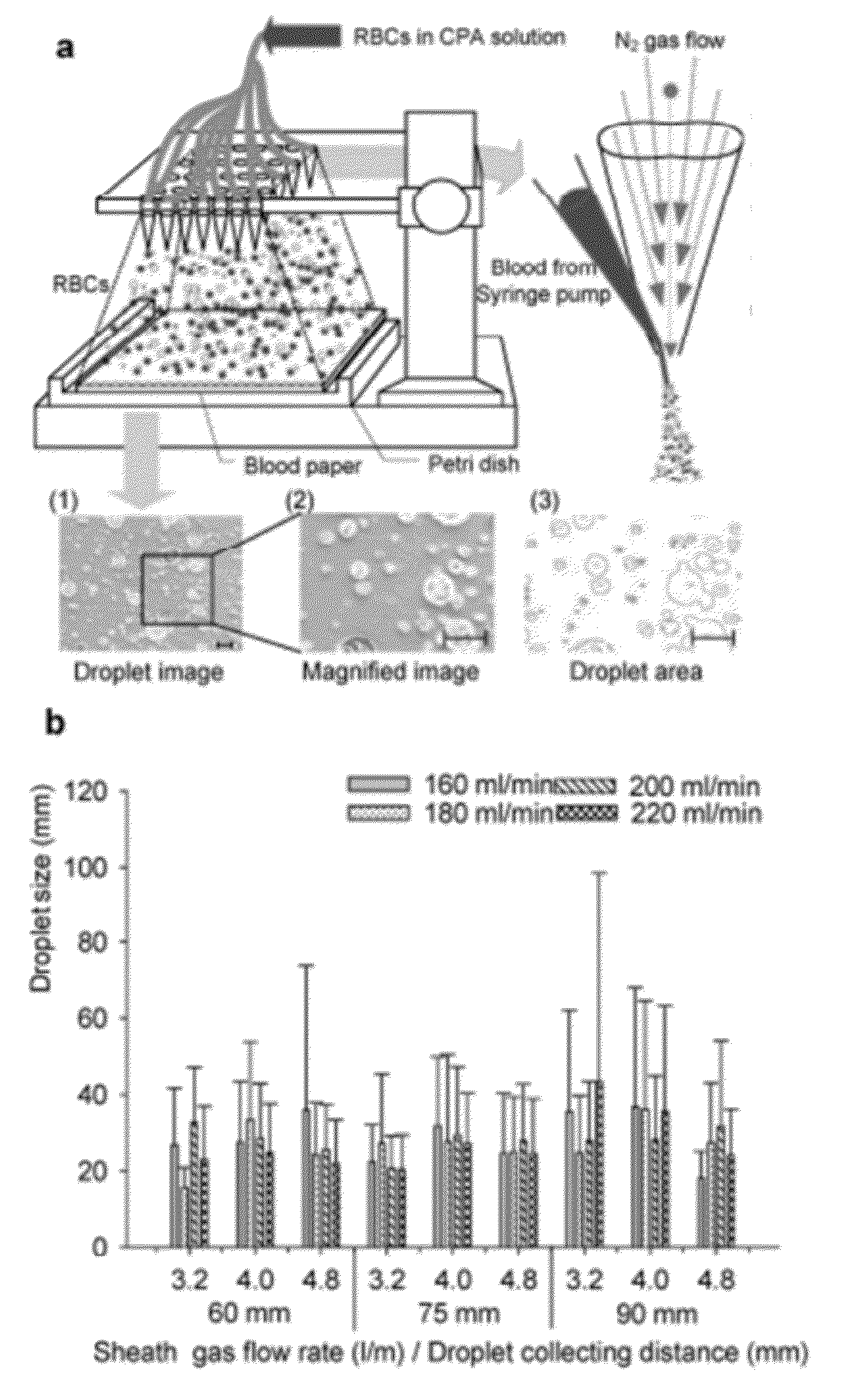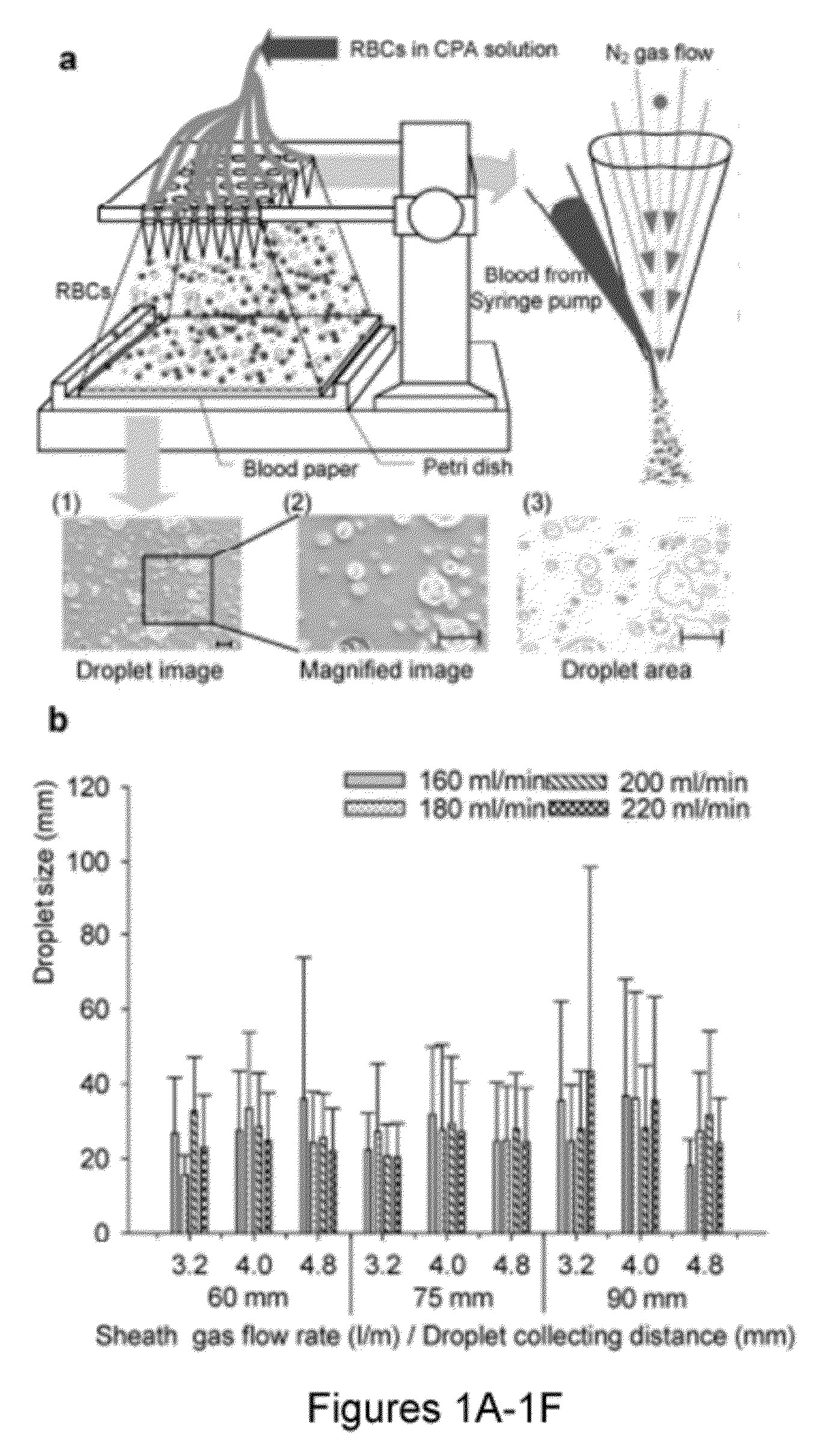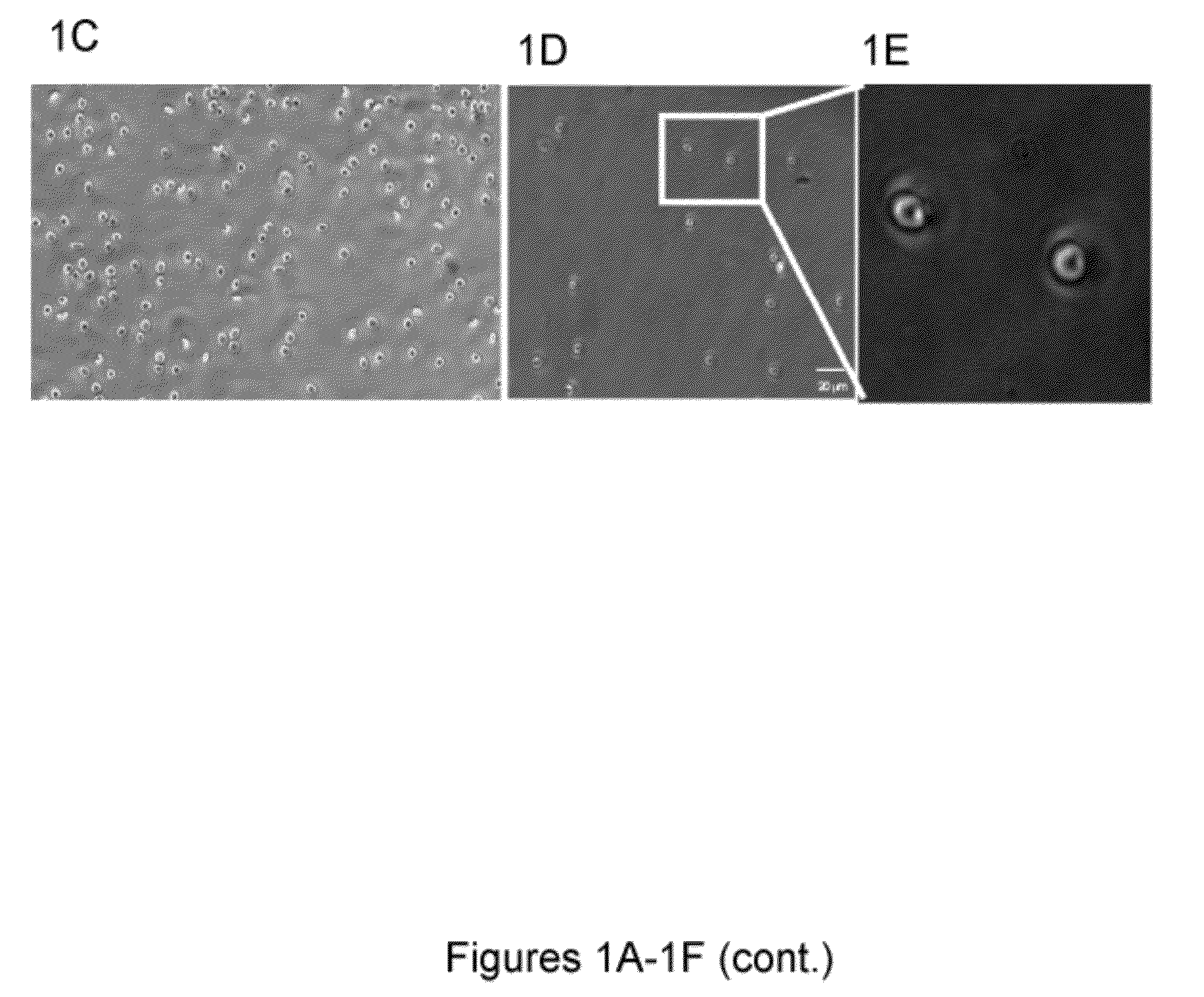Vitrification systems and methods
a technology of vitrification system and biological sample, applied in the field of cryopreservation of biological samples, can solve the problems of low throughput, significant levels of cellular injury and/or death, and the current minimum volume vitrification method is operationally demanding, so as to reduce the level of technical skill, facilitate automation, and improve the effect of efficiency
- Summary
- Abstract
- Description
- Claims
- Application Information
AI Technical Summary
Benefits of technology
Problems solved by technology
Method used
Image
Examples
example 1
Blood Banking and Vitrification
[0174]Blood banking has a broad public health impact influencing millions of lives daily. It could potentially benefit from emerging biopreservation technologies. However, although vitrification has shown advantages over traditional cryopreservation techniques, it has not been incorporated into transfusion medicine mainly due to throughput challenges. Described herein is a scalable method that can vitrify red blood cells in nanodroplets. This approach enables the vitrification of large volumes of blood in a short amount of time, and makes it a viable and scalable biotechnology tool for blood cryopreservation.
[0175]Blood shortages pose a major global health challenge that frequently occur during natural disasters, military conflicts, and in clinical settings due to fluctuations in supply and demand [1]. Long-term cryopreservation of blood products provides a supplementary inventory to help meet the demand during such shortages by freezing excess blood. ...
example 2
Nanoliter Droplet Vitrification for Oocyte Cryopreservation
[0228]Oocyte cryopreservation remains largely experimental, with live birth rates of only 2-4% per thawed oocyte. Described herein is a nanoliter droplet technology for oocyte vitrification. An ejector-based droplet vitrification system was designed to continuously cryopreserve oocytes in nanoliter droplets. Oocyte survival rates, morphologies and parthenogenetic development after each vitrification step were assessed in comparison with fresh oocytes. Oocytes were retrieved after cryoprotectant agent loading / unloading, and nanoliter droplet encapsulation showed comparable survival rates to fresh oocytes after 24 h in culture. Also, oocytes recovered after vitrification / thawing showed similar morphologies to those of fresh oocytes. Additionally, the rate of oocyte parthenogenetic activation after nanoliter droplet encapsulation was comparable with that observed for fresh oocytes. This nanoliter droplet technology enables the ...
example 3
High Throughput, Automated, Vitrification Based Blood Cryopreservation in a Closed System
[0334]Globally, millions of health complications result from large-scale blood shortages during natural disasters and military conflicts, as well as local shortages in clinical settings due to fluctuations in supply and demand1. Long-term cryopreservation of blood products provides an inventory to help meet the demand during such shortages by freezing excess blood. Although the use of additive preservatives has extended the liquid storage of blood products to several weeks (i.e. 42 days for red blood cells (RBCs)2-4), limited shelf life makes it difficult to manage blood inventories resulting in a large waste (˜0.2 billion USD annually)6. Thus, there is a significant need for new approaches to amend the way blood is stored, transported and handled in war, global disaster zones as well as local emergencies. Improved blood cryopreservation methods will prevent waste, and reduce vulnerability to sh...
PUM
 Login to View More
Login to View More Abstract
Description
Claims
Application Information
 Login to View More
Login to View More - R&D
- Intellectual Property
- Life Sciences
- Materials
- Tech Scout
- Unparalleled Data Quality
- Higher Quality Content
- 60% Fewer Hallucinations
Browse by: Latest US Patents, China's latest patents, Technical Efficacy Thesaurus, Application Domain, Technology Topic, Popular Technical Reports.
© 2025 PatSnap. All rights reserved.Legal|Privacy policy|Modern Slavery Act Transparency Statement|Sitemap|About US| Contact US: help@patsnap.com



